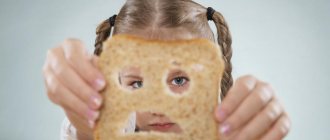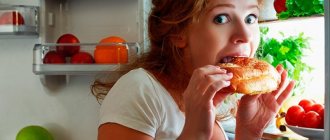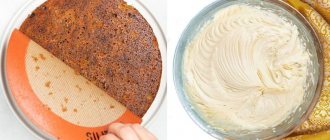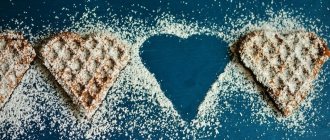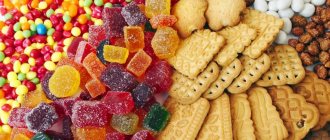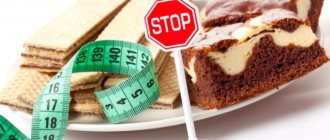SUGAR-FREE products. “No Sugar”: how to stop eating sweets.
Doctor Jacob Teitelbaum talks about the dangers of sugar addiction and how to get rid of it.
Why you should give up sugar.
People have been eating sweets for thousands of years. Sugar is present in any natural food. But he was always not a problem, but a delicacy. Today, more than a third of the calories we consume come from sugar and white flour, which is added to products during production, and our body is simply not designed to cope with such a huge dose.
At first, sugar gives a burst of energy, but after a few hours the person runs out of energy and needs a new portion. In this respect, sugar is like a money lender lending energy: it takes away more energy than it gives. In the end, a person can no longer pay the loan: his strength is at its limit, he experiences irritation, and is tormented by mood swings.
In addition to rapid fatigue and psychological problems, sugar causes many long-term health problems. For example, over the past 15 years, consumption of high fructose corn syrup has increased by 250%, and over the same period the incidence of diabetes has jumped by about 45%. Sometimes the sugar industry tries to confuse the public by claiming that corn syrup is not sugar. But from the body’s point of view, it is still the same sugar, and more harmful than that produced from sugar cane.
Here are just a few of the chronic health problems associated with excess sugar in food: - Chronic fatigue syndrome. - many types of pain. - deterioration of immunity. - chronic sinusitis. - irritable bowel syndrome and spastic colitis. - autoimmune diseases. - cancer. - metabolic syndrome with high cholesterol and hypertension. - heart diseases. - hormonal disorders. - infection with Candida and other yeasts. - attention deficit hyperactivity disorder.
The list is far from complete. A real list would go on for many pages!
I know firsthand how important it is to rid a person of excess sugar. For over 30 years, I have included these programs in the treatment of countless patients experiencing chronic health problems. I have seen thousands of people with Chronic Fatigue Syndrome and Fibromyalgia, aggravated by a craving for sweets. I experienced this problem myself. I myself suffered from a sugar addiction and fell ill with chronic fatigue syndrome in 1975. And getting rid of sugar addiction became an important element of treatment.
Sugar addiction is like the canary in the coal mine. It usually indicates more serious problems. I have nothing against sugar per se, but I don't want it to cause illness. A person should feel great! And you, dear readers, will feel exactly like this when you get rid of the problems associated with sugar addiction. Tired of riding the Sweet Roller Coaster? I will be happy to tell you how to get off this dangerous ride.
What do I need to do.
The first step towards combating sugar addiction is to change your eating behavior. As with any addiction, you will first have to limit contact with the substance that causes it as strictly as possible and only then begin treatment. It is absolutely not necessary to give up sweets in one fell swoop. Simply start eliminating high-sugar foods from your diet, including fast food, processed foods, soda and fruit drinks.
Labels. A proven method is to avoid eating foods that list sugar in any form (sugar, sucrose, glucose, fructose, corn syrup) among the first three ingredients on the label. You should also avoid white flour, which is found in many types of bread and pasta, because the body will quickly turn it into sugar and give you a sugar high, followed by withdrawal symptoms. Whole grain bread takes some getting used to, but over time you will realize that it tastes much better. Enjoy it, enjoy it - in moderation. Be surprised if, as you change your diet and reduce your sugar intake, you begin to experience signs of withdrawal, such as mood swings and irritability. These signs will become even more obvious if you simultaneously try to quit caffeine. But if you treat the reasons behind your type of sugar addiction, symptoms will go away in seven to ten days or even faster. Of course, for some, the process of giving up sweets can be more painful, but most will manage without serious problems.
Thus, if withdrawal symptoms do occur and bother you, reduce your sugar and caffeine intake more gently. Allow yourself to snack on some healthy fruit and even a few slices of the best dark chocolate you can buy. This will make it easier for you to stick to the program. caffeine aggravates the symptoms of sugar addiction, so it should also be eliminated. It makes you tired, and it makes you reach for an artificial source of energy - sugar. It is wise to limit yourself to one cup of coffee a day, and then switch to tea - loose leaf or in tea bags (after the first invigorating cup, it is advisable to drink decaffeinated tea.
The next step is to add healthy foods to your diet that will help you stay away from the Sugar Roller Coaster. The best way is to buy whole foods (unprocessed fruits, vegetables, grains and meats. Most of these have a low glycemic index and do not feed cravings for sweets. The glycemic index (GI) shows which foods raise blood glucose levels the fastest and most strongly. For sugar addicts It is especially important for sugar addicts to keep this in mind. Glucose has a GI of 100. All other foods are measured in relation to glucose. With a glycemic index above 85, blood sugar rises very quickly, and if the glycemic index is below 30, sugar levels practically do not rise. Of course, portion size should also be taken into account: both factors are combined in the concept of “Glycemic Load.” Remember that you must listen to your body: Which foods and their combinations make you feel best?
In conditions of insufficient hydration, it will be more difficult to give up sugar. Water helps the body remove toxins. how much water should you drink per day? Check your mouth and lips from time to time. if they are dry, it means there is not enough moisture and you need to drink more. Everything is simple. but drinking tap water is wrong. Water is great for washing dishes and laundry, but for human consumption it is not at all so good: it is not always clean, and there are many microorganisms in it.
It's not so simple with bottled water either. brands of bottled water are still the same water from the tap, and the price does not correspond well to the quality. You need to ensure yourself access to healthy water. How do you know which one is better? Buy bottled water that has been purified using reverse osmosis and carbon filtration. For home use, it is best to choose a high-quality filter.
High Sugar Foods Fact Sheet. Table of glycemic indexes of foods
A properly formulated diet is the basis for treating diabetes.
To create a balanced diet, people with diabetes should constantly read package labels to find out the nutritional content of the product. After all, blood sugar levels depend on this. In addition to nutritional value, calorie content and glycemic index (GI) are taken into account. Diabetics and those wishing to lose weight pay attention to the latter indicator. Moreover, the GI and calorie values do not depend on each other in any way: high-calorie dishes can have a low GI and vice versa.
It is impossible to remember the composition of all products. Ready-made tables sometimes lack products, and you have to search for scattered information on different resources. Our table is the most complete and includes almost all products from the daily diet.
What is the glycemic index: calculation and classification
This term was introduced by Canadian physician D. Jenkins in 1980. For a long time, he took measurements and found out after consuming which product the greatest rise in blood glucose was observed.
Moreover, the researcher took such a mass of product that would contain exactly 50 g of carbohydrates. Using the data obtained, he compiled a table. It turns out that the glycemic index is a percentage indicator of how quickly the blood glucose level will increase. The reference value is glucose - its GI is 100.
The importance of calculating GI in diabetes
It is important for diabetics to ensure that blood sugar levels do not increase, but remain at a relatively constant level. In a healthy body, this function is performed by insulin. For a diabetic, there are only two options: take special medications and monitor the foods you consume. The last point includes eating foods that do not increase glycemia or increase it slightly.
There are two classifications of GI:
Food:
- low: <.55
- average: 56-69,
- high: >.70.
For the daily diet:
- low: <.45
- average: 46-59,
- high: >.60.
The division of the classification is due to the fact that when consuming foods with a low glycemic index (below 55), the total index per day will already be in the range of 55-60. Therefore, when compiling a daily diet in conditions of chronic diseases such as diabetes, you should focus on the general daily index of around 45 units.
The glycemic index is an indicator that should be considered in conjunction with the nutritional value of the product.
The glycemic index depends on:
- type composition of carbohydrates,
- method of preparing food,
- method and time of storage of products,
- fiber,
- ratio of proteins and fats.
The table shows the average values.
Misconceptions
Many people believe that by eating only foods with a low glycemic index, glucose levels in diabetes will decrease. But keep in mind:
- Weight gain occurs when excess glucose passes into fat mass, but its main function is to provide the body with energy and glycogen, that is, completely eliminating carbohydrates from the diet is prohibited!
- GI is a relative parameter. For example, a spoonful of sugar dissolved in tea or coffee is less harmful than a baguette. But the GI values of sugar are lower than those of baguette.
- Low glycemic index foods sometimes lead to the “double glucose” effect. For example, when eating low GI food for breakfast, but with a lot of carbohydrates. As a result, glycemia is formed due to incoming carbohydrates.
We also recommend reading about bread units of products
For example, sausages have a low glycemic index, but contain up to 80% fat, which will increase body weight.
Products WITHOUT SUGAR and fructose list. List of sugar-free foods
The body needs sugar as a source of energy. If the product is undesirable, but energy is still needed, preference should be given to sugar-free food products that replenish the body’s energy reserves no less than it does.
A short list of sugar-free products:
- Meat
An important supplier of proteins, fats, amino acids, vitamins necessary for the functioning of the nervous, circulatory, musculoskeletal systems, and strengthening the immune system. The healthiest dishes made from chicken, beef, and pork are boiled and stewed. You should not overdo it with processing methods, seasonings and sauces - so that unnecessary ingredients do not add calories to the food.
- Cheese
Saturates the body with calcium, proteins, a complex of vitamins, and anti-stress components. It is well poisoned and improves appetite. Daily serving – 100 g. Useful as a snack during the day.
- Fish
The main source of polyunsaturated fatty acids that lower cholesterol. Useful acids also help strengthen muscles and cell renewal. A whole list of microelements stimulate the activity of the heart, nerves, and brain. It is important to preserve these properties during cooking: it is better to boil the fish or bake it in a sleeve. The best seasonings are lemon juice, dill and parsley.
- Seafood
Lobsters and oysters, shrimp and mussels are the most common seafood. It is a low-calorie food rich in minerals, vitamins and healthy fatty acids. Seafood is used as a separate dish or component of salads and sandwiches.
- Pasta
To reap the benefits of this food, you need to choose coarse varieties. Various types of pasta enrich the body with fiber, vitamins, minerals, and amino acids. Regulate cholesterol and have a positive effect on the cardiovascular system. However, you should not get carried away with the product, as well as serving fatty sauces with it, so as not to increase the overall caloric content of the diet.
Products WITHOUT SUGAR and fructose. What foods are considered dietary?
In order for the body to receive the necessary nutrients, nutrition should always be varied and balanced. Dietary products that help you lose weight are available to every housewife in abundance. These are vegetables, fruits, meat and fish products, dairy products. The right combination will bring the body the necessary minerals and vitamins. To feel good and not gain extra pounds, enrich your menu with the food groups described below. Each of them has five main components:
- Low-calorie foods: citrus fruits, cucumbers, lean white fish, mushrooms, tomatoes.
- Hearty foods: beans, whole grain bread, oatmeal, durum wheat pasta, apples.
- Delicious and healthy dishes: fruit purees, low-fat chicken pate, crispy vegetables and fruits (apples, carrots), whipped dairy products, berries.
- Products that you should always carry with you as a light lunch or snack: bananas, grain breads, dried fruits, nuts, low-fat dairy products in half-liter packs.
- Foods that do not affect blood sugar levels: mushrooms, lettuce, lentils, skim milk, berries.
- Low-fat foods: tuna, chicken by-products, perch, cottage cheese, seafood.
- Products for the good appearance of your body: clean water, almonds, flaxseed oil, olive oil, avocado.
- Products that do not retain water in the body: lingonberries; berry fruit drinks; green tea, orange juice, celery juice.
Tips for eating without sugar
Here are the eight best tips for your sugar-free diet.
- Avoid soft drinks, fruit juices, sweetened coffee or tea and all other sweetened liquids and drink water.
- Cook with fresh and unprocessed foods, on your own and as often as possible; Avoid ready-made meals.
- Consume plenty of protein from fish, meat, natural dairy products, eggs and soy and plenty of slow-release carbohydrates from whole grains, legumes and vegetables.
- Use zero- or low-calorie sugar substitutes such as erythritol (no calories), stevia (no calories) or xylitol (40% fewer calories than sugar) if you can't handle the sweet taste.
- In critical situations (holidays, Christmas dinners, gatherings with friends and family), prepare meals in the form of fruit or vegetable snacks.
- Eat regularly and choose fruits, vegetables or nuts as sugar-free snacks.
- Move and exercise regularly (2 times a week!).
- If you want to snack on something sweet, do it immediately after training and in small quantities.
Avoid restaurants - cook yourself!
The only chef you can completely trust is yourself. If someone serves you a dish, you have no way of knowing what's really in it. You should always be very skeptical when it comes to restaurant food because sugar is a cheap raw material that is often added to dishes to provide a bold flavor. For example, supposedly “healthy” Asian dishes in Thai or Indian eateries can turn out to be sugar bombs.
The best rule of thumb if you go to a restaurant: first, the food should hit the plate when its original shape is still clearly recognizable. This is why boiled potatoes are better than mashed potatoes, steak is better than cutlets or curry, sautéed vegetables are better than ratatouille, etc. It is better to avoid direct salad dressings and create sugar-free dressings with vinegar, oil, pepper and salt.
The problem of sugar in many dishes will solve itself if you cook them yourself, rather than buying them at the supermarket or ordering them from a restaurant.
Sweets without sugar
If you want to live a sugar-free life but still love the sweet taste, you should use low-calorie or sugar-free substitutes to make sugar-free foods for yourself, such as when baking without sugar.
You should know the following sugar substitutes
The sugar alcohol erythritol has no calories and does not affect blood sugar or insulin levels. The natural sweetener stevia also contains no calories and is 300 times sweeter than table sugar. Xylitol or "birch sugar" is a sugar alcohol made from tree bark that has about the same sweetness as table sugar but only 40% of its calories.
Sugar substitutes
Sweeteners
Sweetener
What's the best sugar substitute?
Which sugar substitute is best depends on your preferences and goals.
- Erythritol contains no calories.
- Xylitol contains 40% fewer calories than sugar.
- Stevia has a licorice aftertaste and is suitable for diabetics.
- Coconut sugar is naturally occurring and versatile.
- Agave syrup contains valuable minerals and is easily soluble.
- Coconut syrup is natural and unrefined.
- Depending on the manufacturer, Yacon syrup contains up to 50% fewer calories than sugar.
- Rice syrup is suitable for fructose intolerance.
- Honey is a natural product and has a slightly higher sweetness than sugar.
Each sugar substitute has its own advantages and disadvantages. It all depends on what your expectations are from a sugar substitute. For some it is important to have a sugar alternative as part of a low carb or low calorie diet, for others it is important to use a natural product or to take care of their blood sugar levels due to diabetes.
Products WITHOUT SUGAR and gluten. Gluten-free diet - Reviews
Ekaterina Nekrasova, 34 years old, Tver
If you want to lose weight on a gluten-free diet, you should follow these basics of your new eating plan. These basics work for weight loss:
- Make sure you buy gluten free products.
- Find out which foods contain gluten and which do not.
- Always carry snacks with you to snack on so you don't feel hungry.
- Try to avoid consuming sugar.
- Make sure you don't feel hungry so you don't undermine your results with dietary changes.
These gluten-free diet basics are from my own experience. I'm not a big fan of moderation in my diet plan, but I was told it would require sticking with it and being patient. And truly these words worked wonders for me. I successfully lost 5 kg of weight in just 20 days.
Gluten Free Products
This substance is found not only in flour and bread. It can be found in meat and coffee, as well as chocolate, milk and spices.
The following are considered gluten-free:
- all vegetables;
- all fruits;
- any unprocessed meat;
- dairy products: cheese, yogurt (plain, not flavored), cream, sour cream, milk, whey, casein and butter (no additives);
- cereals and flour: corn, flaxseed, brown rice, buckwheat, almonds, quinoa, rice, soy flour, yeast;
- most alcoholic beverages, excluding beer;
- nuts;
- all oils and vinegar;
- honey;
- most spices;
- vanilla;
- eggs.
Because gluten is used as an additive by many food manufacturers, sticking to a specific gluten-free diet is difficult for most people. In addition, products labeled “gluten-free” contain less than 20 mg of gluten and can be consumed by people with celiac disease. Doctors specializing in the treatment of this disease very often express the opinion that gluten has a negative effect on the body only in a sick person.
What is sugar?
Sugar is the general name for soluble carbohydrates, many of which are used in the food industry.
Simple sugars - monosaccharides - include glucose, fructose and galactose. Regular table sugar, sucrose, is a disaccharide that breaks down into glucose and fructose. It is important to note here that glucose is the end product of the breakdown of all carbohydrates; it is found everywhere: from fruits to buckwheat. Let's remember this important argument; it will be useful in a dispute with those who consider glucose necessary for the brain, which can only be obtained from candy or a chocolate bar.
The desire to snack on chocolate and, in general, to overeat stress is formed in childhood, like our entire food culture in general. In our culture, it is generally customary to express love for children with candies and sweet gifts for the New Year, emphasizing the exclusivity of sweets - on holidays you can eat to your heart’s content and “don’t deprive your child of his childhood.” Grandfathers and grandmothers, who have experienced a certain shortage of food, sincerely and wholeheartedly offer candy. What about a sweet reward for eating noodle soup or boiled cabbage? What about “switching” a whining baby to chocolate?
This is how an unhealthy habit of rewarding with something sweet is formed, which in adulthood leads to stress eating and incorrect food dominants.
So, why has it become harmful now?
Until recently, fat was considered the main enemy of health (spoiler: not at all). This led to large-scale defatting of products, but in order to maintain a recognizable taste, sugar was added to low-fat curds, which in the long run led to an increase in health problems. Now the scientific community has stepped far forward, more and more large and independent studies in the field of nutrition are appearing, and it is becoming easier to find and process information.
What is modern baking or chocolate? A mixture of vegetable fat and sugar. When we see the final ingredients, a fusion dessert is no different from the margarine rose of a cheap cake.
One cannot help but pay attention to the fact that now most people use synthetic refined sugar - super-sweet and super-cheap. Formally, it makes no difference whether we eat synthetic or natural sugar, since in the final form we still get glucose. The question is dosage, concentration and release rate.
In view of the obvious overabundance of various goods on the shelves, it becomes simply impossible to control sugar consumption, since it is also found in products sold with the “sugar-free” and “buy-me-I’m-very-healthy” labels.
Products WITHOUT SUGAR and carbohydrates. 4 Dairy products
List of dairy products that contain little or no carbohydrates:
- Gruyère cheese. This special type of cheese, originally from Switzerland, does not contain carbohydrates and has a great taste. Gruyere is rich in calcium, which is a building material for bones.
- Butter. The dairy product is free of carbohydrates. It contains saturated fats, which are essential for the normal functioning of the human body.
- Cottage cheese. 1 cup contains 6 grams of carbohydrates. Cottage cheese is high in protein, which stimulates weight loss and helps muscles recover (approximately 16 grams of protein per 100 grams of product).
- Natural yogurt. Yogurt without sugar and without added dyes or flavors is best suited for dietary nutrition. This product is loaded with probiotic bacteria that improve digestion and strengthen the immune system.
- Goat milk. One cup contains 11 grams of carbohydrates. It is rich in useful substances such as nutrients, omega-3 fatty acids, as well as conjugated linoleic acid, which triggers the process of fat breakdown in the human body.
Products containing hidden sugar. The dangers of hidden sugar in food
Today it is quite difficult to find products without sugar. Symposium participants noted that against the background of the growing problem of obesity, the World Health Organization (WHO) is increasingly talking about the increase in the number of so-called “hidden hungry people.” This category includes people who have sufficient and even excess caloric intake, but at the same time do not receive enough essential nutrients in their diet. In such conditions, the problem of hidden sugar in foods is quite acute, and the most important task is to reduce the calorie content of the diet without losing its nutritional value.
According to the symposium participants, modification of the composition of products from the point of view of regulating their caloric content and biological value can reduce the caloric content of the diet without reducing its nutritional value, because the caloric content of white sugar is very high - 400 kcal per 100 grams.
The table clearly shows which foods contain the most hidden sugar. Take a closer look to see if you consume these treats regularly?
At the same time, there is no need for a healthy person to completely eliminate sugar from the diet. After all, carbohydrates, including sugars, are necessary for the normal functioning of the human body. It is important to plan your menu correctly so as not to exceed the recommended daily sugar intake by removing foods with hidden sugar from snacks.
So how much sugar can you consume per day without harm to your health? The recommendations of nutritionists are as follows: sugar consumption per day should not exceed 10% of the calorie content of a person’s daily diet.
You can navigate the problem of hidden sugar in foods using tables. After all, not only juices are rich in sucrose, but also many other food products, treats, and industrial drinks, the composition of which people do not think about when consumed.
Hidden sugar in food - a visual table.
Sweet products WITHOUT SUGAR. Can you eat sweets if you have diabetes?
Consuming sugar during illness can lead to serious complications for the patient.
At the same time, control over the level of glucose in the blood is disrupted, complications of kidney disease arise, and gum disease develops. These complications in diabetes are possible if the patient continues to consume sweets uncontrollably.
With the right approach, illness will not be an obstacle to consuming foods containing sweeteners.
If you have diabetes, you are allowed to eat sweet foods, but in limited quantities. It is not recommended to eat foods containing a lot of sugar. Sweeteners must be used.
A diabetic is allowed to eat special diabetic sweets made according to special recipes. A number of sweet foods are completely contraindicated for patients. Some of them are allowed, but in certain quantities. Much depends on the type of disease in a person.
What is contraindicated?
For patients with type 1 disease, the following products are completely contraindicated:
- store-bought juices;
- cakes;
- jam boiled with sugar;
- bakery;
- candies;
- lemonade and any other sweet soda;
- cakes;
- pure honey;
- some fruits (bananas, figs);
- some berries (cherries, grapes);
- ice cream;
- yoghurts.
In this type of diabetes, there is an absolute lack of insulin in the human body. For this reason, patients with this type of diabetes need to be especially careful when consuming sweets.
Patients with type 2 diabetes will need to exclude from their diet:
- sugar;
- syrups;
- pastries made from butter dough;
- candies;
- flour products;
- jam;
- sugar-sweetened drinks;
- alcohol;
- a number of sweet fruits (bananas);
- fatty dairy products (yogurt with sour cream).
This type of disease is characterized by a relative lack of insulin. Diabetes requires a person to follow a special diet. At the same time, he needs to constantly monitor his blood glucose levels.
What is allowed to eat?
Patients do not have to give up sweets forever.
Allowed foods for both types of diabetes include:
- sweets for diabetics (contain sweeteners, as indicated on the packaging);
- some dried fruits (dried apples, dried apricots);
- desserts made with your own hands according to special recipes for diabetics;
- baked goods without adding sugar;
- stevia as a sweetener of plant origin;
- licorice.
These products are allowed as desserts for diabetics. They must be consumed in strictly limited quantities. If there is an excess of glucose, a diabetic patient can develop serious complications leading to death.
Patients with diabetes are allowed to use natural sweeteners as ingredients for sweet desserts. It could be fruit.
The myth about foods that lower blood sugar
Contrary to the claims of the advertising gods, you cannot eat anything to reduce the level of carbohydrates in the blood. Any food increases sugar levels. A slower rise and lower glucose levels can be achieved by eating low GI foods containing fiber.
The GI of dishes also depends on the composition of the products, methods of preparation and order of intake:
- Products containing starch increase their GI when heated.
- Crushing foods increases their GI, because this way they are digested and absorbed faster.
- The GI will decrease if you add vegetable oil. It slows down digestion and absorption of carbohydrates.
- The absorption of glucose is also affected by the sequence of food intake: it is better to take foods with “slow” sugars at the beginning of a meal (porridge, meat, fish, salads), so that the “fast” carbohydrates (sweets) taken after them are absorbed more slowly. This simple trick significantly slows down the growth of glucose in the blood.
List of SUGAR-FREE products. Best Low Sugar Foods
Let's put together a comprehensive list of sugar-free diet foods that you can use to shape your diet:
Healthy protein food
- meat of herbivores: beef, lamb, venison and so on;
- “country” poultry: chicken and turkey;
- high-quality protein powders, including bone broth, callogen, whey protein (ideally raw goat milk), or pea protein;
- lentils, beans and other legumes (ideally sprouted);
- fish: salmon, mackerel, tuna, etc.
- organic soy products: natto, tempeh, etc.
- raw milk and fermented milk products such as kefir and yogurt.
- chicken eggs;
- cheese.
Try the simple and unpretentious egg diet for weight loss!
- cruciferous vegetables such as cabbage, broccoli, Brussels sprouts, etc.;
- other vegetables: bell peppers, cucumbers, carrots, green peas, okra, turnips, pumpkin, zucchini, asparagus, tomatoes, mushrooms, artichokes, etc.
- flax seeds and teas;
- avocado;
- coconut pulp;
- berries;
- legumes such as black and navy beans, adzuki, lentils, lima;
- whole grains in moderation: quinoa, brown rice, oats, amaranth, buckwheat, teff, farro;
- fruits in small quantities: apples, figs, prunes, oranges, grapefruit, melon or kiwi.
Healthy fats
- coconut oil, milk, butter or cream;
- natural olive oil;
- nuts: walnuts, almonds, cashews, Brazil nuts;
- chia, flax, sunflower seeds;
- avocado.


